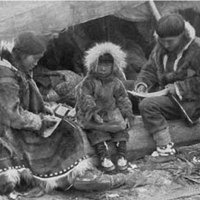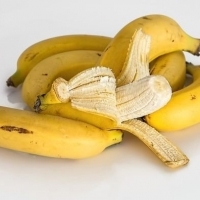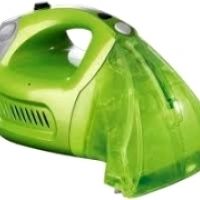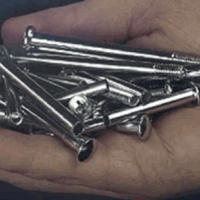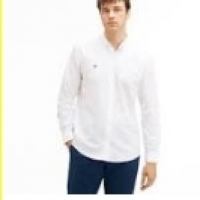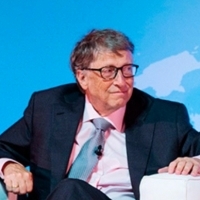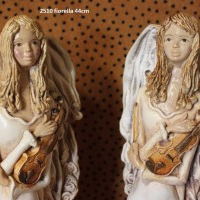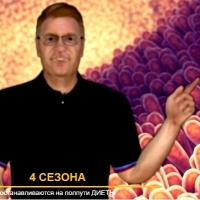0 : Odsłon:
The Vanishing Village of Angikuni Lake.
The legend of the disappearing Inuit village of Angikuni Lake turns out to be simple pulp fiction.
by Brian Dunning.
The year was 1930; the place, the frozen wastes of northern Canada. It was November, late fall, and the flat landscape was blasted over with ice crystals and wind. A lone trapper, Joe Labelle, made his way to an Inuit village he knew. All looked well as he approached; but when he arrived, nobody answered his greeting calls. Labelle looked around and found everything in place, everything except the people — the entire population of the village had vanished. Food, clothing, rifles, half-cooked meals, and everything else needed for life on the tundra were all at the ready, but no Inuit to use them. Labelle stood on the shore of Angikuni Lake and pondered the mystery, then went straight away and reported the disappearance to the Royal Canadian Mounted Police. Since then, the story of Angikuni Lake has been a mainstay of Canadian mystery lore.
You'd hardly recognize Angikuni Lake as a lake. Nunavut is the largest and northernmost of Canada's territories, and is one of the most sparsely populated regions on Earth. There are more than 50 square kilometers of barren rock and ice per person in Nunavut — half the density of Greenland, and most of them speak Inuktitut. There is only major settlement within the whole of this vast territory, the capital Iqaluit with less than 7,000 population, 1500 kilometers east of Angikuni Lake. Nunavut encloses most of the Canadian Arctic Archipelago and its mainland portion is almost completely devoid of any features at all, having been scraped flat by glaciers that left only barren rock and tundra laced with shallow puddles and streams, generously called lakes and rivers. A few dozen of these puddles, loosely linked together, are what comprise Angikuni Lake. During most of the year it's an unbroken flat plain of ice and snow, completely indistinct from anything within 500 kilometers in any direction. They call this part of Canada the Barren Grounds.
The most famous published account of Joe Labelle's mysterious encounter comes from Frank Edwards' 1959 book Stranger than Science, in which Edwards devoted three short pages to the story. He tells how the Mounted Police returned to the village site with Labelle and confirmed everything he told them. And like Labelle, they were unable to find any trace of the villagers, nor come up with any suggestion why they might have left all of their valuables and necessities behind. Their kayaks still sat on the beach, meals still hung over long-dead cooking fires. The police also found the frozen bodies of the villagers' dogs. Edwards' chapter concludes:
Months of patient and far-flung investigation failed to produce a single trace of any member who had lived in the deserted village of Anjikuni. The Mounted Police filed it as unsolved... and so it remains.
There are a number of things about the Joe Labelle story that raise red flags. For one thing, it happened in November, when average temperatures are 13°C degrees below freezing. Angikuni Lake is a sheet of ice; kayaks pulled up on the beach would not be "battered by wave action". The very presence of kayaks so far inland is suspect, though not impossible. Migratory Inuit would often portage their kayaks to hunt caribou. These eastern Iglulik kayaks were made of sealskin stretched over willow branches. But the small Angikuni Lake is landlocked so far inland on the Barrens that neither willow nor sealskin were available, and this would be by far the farthest inland that the historical use of Iglulik kayaks would have ever been documented. Not impossible, but highly suspect.
Edwards also had Labelle describing a permanent settlement, a "friendly little Eskimo village" of "about thirty inhabitants" that he'd known "for many years". A statement from the Mounted Police says "A village with such a large population would not have existed in such a remote area of the Northwest Territories." They had left sealskin garments behind, in a region where there was caribou hide rather than sealskin; and as a trapper Labelle should have been able to identify it properly. So there was either a series of quite improbable circumstances, or Labelle was wrong, or Edwards was wrong.
Today, no physical evidence exists of a village at Angikuni Lake, and nobody has ever published an account of going up there and clearing away any remnants. So we have to rely on documentary evidence to find the true history of the vanishing village.
Interestingly, following the history of the published accounts is a bit like trying to follow one of those movies that's out of sequence and jumps around from different time periods; and you'll see what I mean.
The earliest recorded publication about Angikuni Lake is a 1976 citation of an article from November 29, 1930, written by an Emmett E. Kelleher in the Halifax Herald newspaper. Kelleher, writing as a "special correspondent" for the paper, told Labelle's story and gave the village a population of 25, and offered a more reserved version of the artifacts Labelle found including a single rusty old rifle and a few dog corpses. The article included a generic photograph of an Inuit village.
Next, on January 17 of 1931, Cortland Starnes, the Commissioner of the Royal Canadian Mounted Police, released an investigation of the event undertaken by a Sergeant J. Nelson. Nelson, in speaking with local traders, learned that Joe Labelle was a real person but worked only in northern Manitoba. He also discovered that Kelleher's photograph was an old one from the RCMP's own archives, and as nobody in the region had heard of this village or its disappearance, Nelson concluded the entire episode was a sensationalized hoax made up by Kelleher.
For the next 28 years, it appears that the presses were quiet. I was able to find no printed works at all, of any kind, that mentioned Angikuni Lake or any of the names involved; until 1959 when Frank Edwards' book was released. Edwards slightly increased the number of Inuit from 25 to 30. Edwards offered no sources for his chapter, and did not mention the alleged 1930 or 1931 releases.
Over the next 17 years, the presses were almost as quiet. A few scattered references to Edwards' version of the story appeared in books about psychics and the paranormal, but no new details were introduced.
It was 1976 when the story really broke. Dwight Whalen wrote a cover story for the November 1976 issue of FATE Magazine called "Vanished Village Revisited". Whalen was the first to note the 1930 and 1931 articles, there does not seem to be any record of any earlier author finding them. Whalen also wrote that when he called the RCMP personally, he was told they had no record of any such event — despite the many details in Sgt. Nelson's report, provided by the RCMP Commissioner himself. Whalen concluded that the whole story was largely invented by Emmet Kelleher, possibly based on a tall tale he heard from Joe Labelle who may, or may not, have stumbled on some actual ruins of a village or camp.
And then things got weird. In the April 1977 edition of FATE, a reader wrote in to dispute Whalen's conclusion. This reader was none other than Betty Hill, at the time the most famous self-described alien abductee in the world, and subject of the 1966 book The Interrupted Journey: Two Lost Hours Aboard a Flying Saucer. Betty claimed that while on a ferry ride with her husband Barney at the Bay of Fundy, they met a Captain Larsen who, as a Mountie, had spent nine years investigating the mystery of the vanishing village at Angikuni Lake. In his opinion, wrote Betty, the villagers had all been abducted by UFOs.
From this point on, UFO writers everywhere began including Angikuni Lake in their books. The 1983 book The World's Great UFO Mysteries by Nigel Blundell and Roger Boar amplified the population of the village to 1200, and added the element of three trappers, Armand Laurent and his two sons, seeing UFOs flying toward Angikuni. They then encountered a group of Mounties on their way to investigate the flying objects. In this version of the story, Joe Labelle used a telegraph to report the vanished village, despite there being no telegraphs within probably a thousand kilometers of the lake.
In 1988 John Colombo's book Mysterious Canada repeated all of this, including Blundell and Boar's overblown details and all of Whalen's correspondence with the RCMP. People magazine ran a 1988 article essentially repeating all of this sensationalized new information. The Canadian UFO Report published in 2006 by Rutkowski and Dittman added all the villagers' ancestral graves having been emptied, and a Rense.com article in 2001 increased the village population to 2000 and buried the dog corpses under twelve feet of snow.
What is a fact-hunting researcher to do?
Going back to the original sources is sometimes easier said than done. Whalen gave precise details of the publication of the 1930 newspaper article and the 1931 RCMP report, and — according to researcher Patrick Derksen who worked with the staff at the Millennium Library in Winnipeg in 2013 — neither appears to exist. They also searched all other Manitoba newspapers from the day, and found no references to the story whatsoever, nor any record of an Emmett E. Kelleher. Certainly nothing like it appears in the microfilm copies I have on my desk right now.
Update! The original 1930 report has been found, in an article in "The Bee" from Danville, Virginia, not in Manitoba. The conclusion of this episode will be updated as soon as I can get around to it.
In 1988, the Australian Skeptics contacted the RCMP historian, S. W. Horrall, who wrote:
Many years ago the members (of RCMP), then retired, who had served in the area at the time these events were purported to have happened (1930) were asked for their comments on the story. They could not confirm it, recalled nothing like it, and were astounded that such a ridiculous tale could be believed. Our files were carefully searched. No strange craft was ever reported. No one named Joe Labelle ever came to the RCMP in panic about Lake Anjikuni. The RCMP did not send out any search parties. The only records we have on the story are copies of letters to correspondents like yourself informing the writers that the story is entirely fictitious.
It seems clear that Frank Edwards' 1959 chapter is indeed the genesis of the tale, apparently made up from whole cloth. It also seems clear that Dwight Whalen, writing in 1976 some 45 years after the event, took advantage of the fact the no one who would have been involved was still living, and invented both the 1930 newspaper article and the 1931 RCMP report (if I'm wrong about this, I warmly invite proof to the contrary). These fabricated reports provided the seeds of a story that motivated UFO writers for decades to come.
Could Frank Edwards have ever imagined how his little campfire tale of a lonely trapper finding a mysteriously abandoned village would have grown? It grew largely due to citations of fake newspaper articles. Back in the fifties and even the seventies, the state of archiving technology might have made it possible for unscrupulous writers to get away with that. Today they still can, but only when their readers accept secondary and tertiary sources without scrutiny — which is, unfortunately, the case all too often.
: Wyślij Wiadomość.
Przetłumacz ten tekst na 91 języków
: Podobne ogłoszenia.
Herrstrumpor: Kraften i design och färger: Komfort framför allt:
Herrstrumpor: Kraften i design och färger: Komfort framför allt: En gång måste mäns strumpor vara dolda under byxorna eller nästan osynliga. Idag har uppfattningen av denna del av garderoben förändrats fullständigt - designers marknadsför färgglada…
CTA. Firma. Elektronika samochodowa. Naprawa modułów, elektroniki.
CTA Elektronika istnieje od 1993 roku. Naszą główną działalnością, powstałą z pasji do świata samochodów, jest serwis elektroniki i elektryki samochodowej. Od 1996 roku CTA specjalizuje się w modyfikacji i wymianie oryginalnego oprogramowania zawartego w…
Kryształ czasoprzestrzenny to układ cząstek, który jest w stałym ruchu, nawet gdy jest w najniższym stanie energetycznym.
To nie jest jakiś magiczny przedmiot z filmów science fiction, ale prawdziwa forma materii, która zachowuje się w niezwykły sposób. Kryształ czasoprzestrzenny to układ cząstek, który jest w stałym ruchu, nawet gdy jest w najniższym stanie energetycznym.…
W 1945 roku bombowiec rozbił się o Empire State Building.
W 1945 roku bombowiec rozbił się o Empire State Building. Pilot leciał z Massachusetts na lotnisko Newark Metropolitan, kiedy stracił orientację w gęstej mgle. Po minięciu budynku Chryslera skręcił w prawo zamiast w lewo. Samolot zderzył się między 78 a…
Maskotka kucyk
: : : : : : : : : : : : : : : : : : : : : : : : : : : : : : : : : : : : : : : : : : : : : : : : : Opis. : : : : : : : : : : : : : : : : : : : : : : : : : : : : : : : : : : : : : : : : : : : : : : : : : DETALE HANDLOWE: : Kraj: ( Polska ) : Zasięg…
Dina Sanichar, zdziczały chłopiec, odnaleziony po wychowaniu przez wilki, był inspiracją dla postaci Mowgliego z Księgi dżungli.
Dina Sanichar, zdziczały chłopiec, odnaleziony po wychowaniu przez wilki, był inspiracją dla postaci Mowgliego z Księgi dżungli. Kiedy przybył do sierocińca, podobno chodził na czworakach i jadł surowe mięso. Chociaż nie mógł mówić, wydawał dźwięki…
Naturlige essensielle og aromatiske oljer for aromaterapi.
Naturlige essensielle og aromatiske oljer for aromaterapi. Aromaterapi er et område med alternativ medisin, også kalt naturmedisin, som er basert på bruken av egenskapene til forskjellige lukt, aromaer for å lindre ulike plager. Bruken av beroligende…
Ang virus sa China. Unsa ang mga simtomas sa coronavirus? Unsa ang coronavirus ug diin kini nagakahitabo? Covid-19:
Ang virus sa China. Unsa ang mga simtomas sa coronavirus? Unsa ang coronavirus ug diin kini nagakahitabo? Covid-19: Ang Coronavirus nakapatay sa China. Gipaila sa mga awtoridad ang usa ka pagbalabag sa lungsod nga 11 milyon - Wuhan. Sa pagkakaron, dili…
FABTRONICS. Company. Electronic devices, electric machines.
Manufacturers We provide efficient and cost effective Australian manufacturing solutions. Entrepreneurs We can partner with you to develop and produce your exciting new electronic technologies. Product Managers Fabtronics can work alongside you to…
Тұмау белгілері: тұмау инфекциясы және асқынулары:
Тұмау белгілері: тұмау инфекциясы және асқынулары: Тұмау - бұл біздің мыңдаған жылдардан бері білетін ауруымыз, әлі де маусымдық қайталанулар кезінде ол біздің аяғымызды тез кесіп тастайды және ұзақ уақыт бойы кәсіби іс-әрекеттерден алшақтатады. Біздің…
Jak otworzyć trzecie oko.
Jak otworzyć trzecie oko. Przed otwarciem trzeciego oka musisz otworzyć i zharmonizować wszystkie inne czakry. Ma to na celu ustanowienie podstaw i zdolności niezbędnych do obsługi wglądów wyższej świadomości. Aby otworzyć czakrę trzeciego oka, wykonaj…
คุณถูกทารุณกรรมหรือไม่? การละเมิดไม่ได้มีอยู่จริง. 2020.
คุณถูกทารุณกรรมหรือไม่? การละเมิดไม่ได้มีอยู่จริง มันอาจเป็นอารมณ์จิตใจเพศวาจาการเงินการละเลยการจัดการและแม้แต่การสะกดรอยตาม คุณไม่ควรทนมันเพราะมันจะไม่นำไปสู่ความสัมพันธ์ที่ดีต่อสุขภาพ…
Pedicure: Me pehea, me aha koe e tihorea ai ki o waewae ki te kiri panana ka tae mai ki nga pepi:
Pedicure: Me pehea, me aha koe e tihorea ai ki o waewae ki te kiri panana ka tae mai ki nga pepi: Anei te mahi o te kiri panana: Ka piki te pāmahana, kei te koa matou ki te tarai i nga hu nui atu ranei o te kaawhiu, ka kuhu atu i nga hu, ka paia hoki te…
1: घरेलू वैक्यूम क्लीनर के प्रकार।
घरेलू वैक्यूम क्लीनर के प्रकार। एक वैक्यूम क्लीनर हर घर में सबसे जरूरी उपकरणों में से एक है। भले ही हम एक स्टूडियो में या एक बड़े एकल-परिवार के घर में रहें, इसके बिना जीवन की कल्पना करना कठिन है। बस आपको किस प्रकार का वैक्यूम क्लीनर चुनना चाहिए? हाथ से…
Shaklingiz uchun ayollar paltosini qanday tanlash mumkin:
Shaklingiz uchun ayollar paltosini qanday tanlash mumkin: Har bir oqlangan ayolning shkafida yaxshi moslangan va mukammal tanlangan palto uchun joy bo'lishi kerak. Shkafning bu qismi kattaroq do'konlar uchun ham, kundalik bo'shashgan uslublar uchun ham…
PLAST-MET. Producent. Nity pełne. Nity drążone.
Plast-Met funkcjonuje na rynku od 1994 roku. Wszystkie produkowane przez nas elementy złączne wykonywane są przy użyciu technologii tłoczenia na zimno. Naszym Klientom oferujemy sprzedaż nitów wykonanych na zamówienie. W ofercie posiadamy nity pełne,…
5: अनुहार झिम्का र प्लेटलेट रिच प्लाज्मा को तरलता।
अनुहार झिम्का र प्लेटलेट रिच प्लाज्मा को तरलता। सबैभन्दा प्रभावकारी र एकै समयमा रि wr्कलहरू कम गर्न वा पूर्ण रूपमा छुटकारा पाउने सबैभन्दा सुरक्षित तरिका प्लेटलेट युक्त प्लाज्माको उपचार हो। यो एक प्रक्रिया हो, प्लास्टिक सर्जरी होईन, बिरामी / बिरामीबाट…
Herbata oolong ma bogaty aromat, łagodny smak i szalenie interesujący wygląd.
Pij zamiast zwykłej herbaty. Działa jak eliksir młodości i ma właściwości antyrakowe Herbata oolong ma bogaty aromat, łagodny smak i szalenie interesujący wygląd. Niebieski napar sprawia wrażenie, jakby pełen był sztucznych dodatków. To tylko pozory -…
Koszula męska ponadczasowe rozwiązania dla miłośników dobrego stylu:
Koszula męska ponadczasowe rozwiązania dla miłośników dobrego stylu: Koszula męska to niezwykle popularny i uniwersalny element garderoby. W zależności od fasonu, koloru czy materiału pozwala na stworzenie stylizacji zarówno eleganckich, jak i takich,…
قد تستغرق العزلة في الولايات المتحدة 10 أسابيع بسبب فيروس كورونا؟ هذا ما يعتقده بيل جيتس.
قد تستغرق العزلة في الولايات المتحدة 10 أسابيع بسبب فيروس كورونا؟ هذا ما يعتقده بيل جيتس. 20200406AD: يُعرف منشئ مايكروسوفت كسلطة في موضوع الوباء ، لأنه لسنوات ، إلى جانب المؤسسة ، التي أنشأها مع زوجته ميليندا ، كان ينفذ مشاريع حماية صحية ويحذر في…
Ble i brynu gwisg nofio a sut i addasu ei faint?
Ble i brynu gwisg nofio a sut i addasu ei faint? Wrth ddewis set o wisgoedd, dylech roi sylw nid yn unig i'w ymddangosiad a'i ymddangosiad, ond yn anad dim i'r maint. Ar gyfer y siwt nofio mwyaf ffasiynol ni fydd yn edrych yn dda os nad yw'n addas i…
5621AVA. Peremajaan Sel Asta C. Serum untuk wajah. Krim untuk leher dan wajah. Krim untuk kulit sensitif.
peremajaan Asta C Seluler. Kode Katalog / Index: 5621AVA. Kategori: Asta C Kosmetik tindakan antyoksydacja, pengelupasan kulit, mengangkat, hidrasi, peremajaan, peningkatan warna, smoothing aplikasi serum jenis kosmetik gel serum Kapasitas 30 ml / 1…
KRENIG. Producent. Portmonetki.
Firma KRENIG istnieje na polskim rynku od ponad 20 lat, specjalizując się w produkcji i dystrybucji ekskluzywnej galanterii ze skór naturalnych. W tym czasie zdążyła zdobyć zaufanie i zadowolenie tysięcy klientów, ugruntowując swoją pozycję w czołówce…
Wszystko się zmienia, kiedy musimy zobaczyć prawdziwą twarz, prawdziwą osobowość osoby obok nas.
Wszystko się zmienia, kiedy musimy zobaczyć prawdziwą twarz, prawdziwą osobowość osoby obok nas. Gdy mija zakochanie, gdy opadają maski, przychodzi moment, aby słowo kochać stało się czasownikiem i jeśli to, co nosimy w sobie i co mamy przed sobą, nie…
Bright space object that appears and disappears in a split second emits alien signal
Bright space object that appears and disappears in a split second emits alien signal Thursday, December 29, 2016 UFOvni2012 who was scanning the skies with his telescope captured something unusual. A bright and colorful object that suddenly appears and…
Grobowiec kurhanowy, który został zbudowany przez króla Kommageny Antiochosa I.
Grobowiec kurhanowy, który został zbudowany przez króla Kommageny Antiochosa I. Grobowiec tego króla wzniesiony został na zboczach góry Nemrut na wysokości 2150 metrów w dystrykcie Kahta w Adıyaman, aby okazać wdzięczność bogom i przodkom, i jest jednym…


